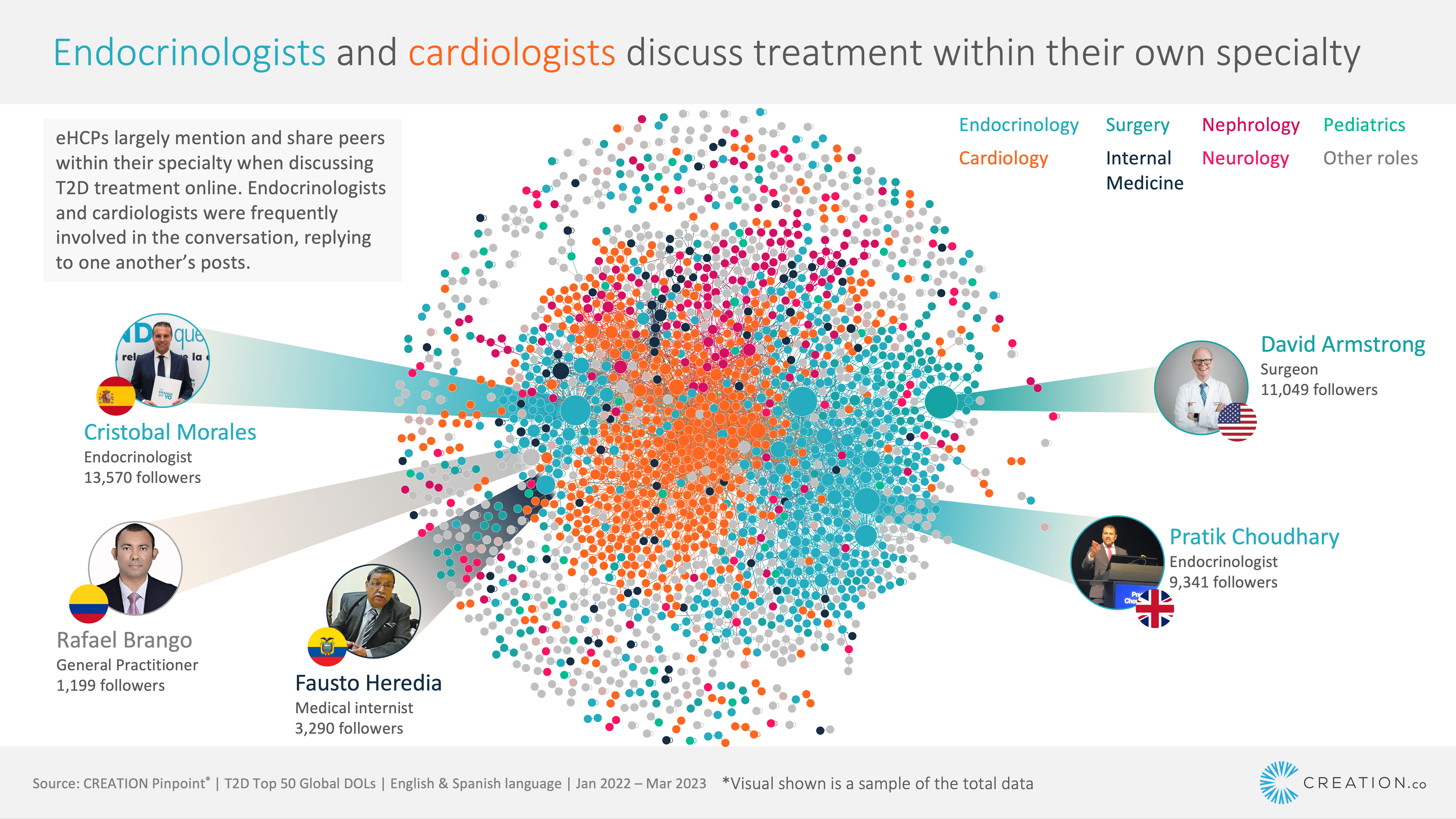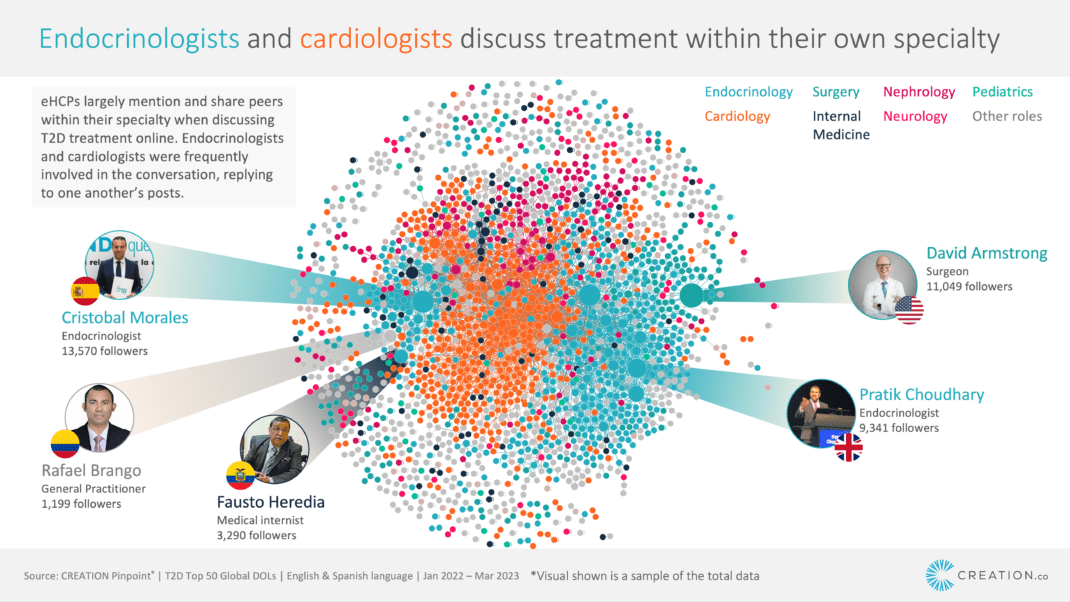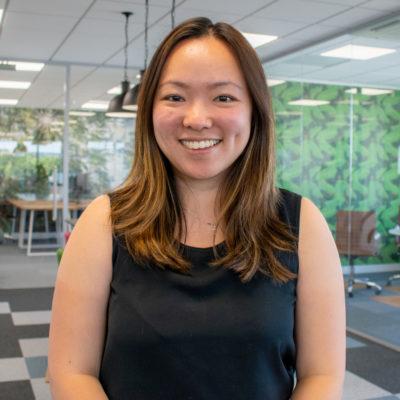Unprompted conversations of online healthcare professionals (eHCPs) provide important insight to pharmaceutical companies in reaching their customers at the right point in their customer journey. CREATION.co’s unique database of over 3 million confirmed HCP social media profiles allows you to tap into these unprompted conversations to discover just how these HCPs are communicating with each other online and how they are connected to each other.
An important part of the insights we support pharmaceutical companies with, includes analysing and segmenting the conversation network of HCPs online. In a recent study conducted by CREATION.co to determine the Top 50 Digital Opinion Leaders within type 2 diabetes, we analysed conversations about type 2 diabetes among all eHCPs to find out how they were talking to one another within the therapy area, with some important insights coming out of knowing this conversation network.
What is a conversation network?

The social media posts of healthcare professionals do not exist in isolation, but are usually in conversation with two or more HCP peers, or HCPs mentioning one another in order to recognise or gain expertise.
A conversation network tells us how these eHCPs communicate with each other, with the clusters of coloured dots showing how different HCP roles are in communities of conversation with one another, and the larger dots representing HCPs that are frequently mentioned by other HCPs, showing their influence on that cluster.
Importantly, each HCP is segmented by their role, providing an important insight for pharmaceutical companies into how their customer segments are relating to and talking to each other, and not, to understand where there are gaps in communication between HCPs of different specialties.
In the example above, we see that there is a significant cluster of highly conversation-connected cardiology specialists, indicated by the large patch of orange dots around the centre of the network. The centrality of the cardiology conversation suggests that cardiologists talking about type 2 diabetes are even more conversational – mentioning each other – than the endocrinologists, who are represented by the two blue clusters on either side. The two clusters of endocrinologists indicate that there are in fact two conversational sub-communities among them; those communicating in Spanish language do not converse much with those who post in English language.
Understanding peer influence
Peer-to-peer influence is significant among HCPs, with key HCPs playing an important role in shaping the opinions of other HCPs through sharing research, data and their own thoughts online. These thoughts and opinions often get amplified through HCP networks. Understanding how HCP customers are connected to one another and who the influencers are within segments of the conversation allows pharmaceutical companies to target messaging to HCP groups that are communicating with each other to ensure that content reaches a broader HCP audience.
If you would like to know more about how your HCP customer segments are talking online, get in touch with us to set up a 1-2-1 meeting to discuss how we can support you with our insights.
–
The analysis in this article is drawn from CREATION.co’s Global Top 50 Digital Opinion Leaders (DOL) 2023, which studied more than 320,000 posts from more than 50,000 online HCPs. Find out more about DOLs in Type 2 Diabetes in the T2D Exploration Webinar.
 By Francesca Gan
By Francesca Gan 



